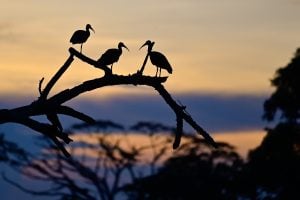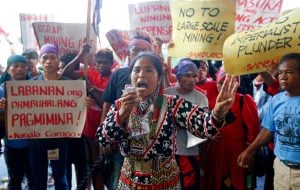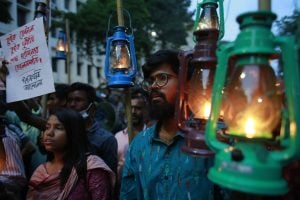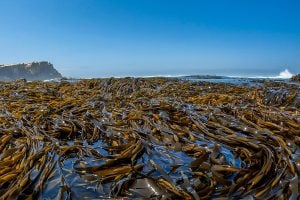The global deal for biodiversity agreed in Montreal in December 2022 was hailed as historic. Governments committed to protect and restore ecosystems, slash pollution from plastics and chemicals, and boost natural solutions to climate change.
But the world has been here before. Two previous deals agreed in 2002 and 2010 failed to live up to expectations. In the meantime, biodiversity loss has spiralled – wildlife populations have declined globally by 69% on average since 1970, and the rate of loss is accelerating.
The UN’s Convention on Biological Diversity (CBD) is hoping to build momentum and speed up implementation of the Kunming-Montreal Global Biodiversity Framework at its next round of talks. COP16 kicks off on 21 October in the Colombian city of Cali, with Astrid Schomaker at the helm for her first major talks as executive secretary.
Appointed in April, Schomaker is no stranger to multilateral negotiations, having worked at the European Commission since 1992, and in the environment department since 2004. Her most recent roles included director for green diplomacy and multilateralism, and director for global sustainable development, and she has headed up units on issues including marine environment and water, and chemicals and nanomaterials. She holds a law degree and a master’s degree in international legal cooperation.
“COP16 is the first opportunity to demonstrate that the framework is not just a couple of nice words, but that countries are really taking action,” says Schomaker. “The first thing that matters is to demonstrate alignment between action and political commitment.”
By the time talks begin, governments are expected to have submitted national action plans (known as National Biodiversity Strategies and Action Plans or NBSAPs) detailing how they intend to meet the global targets agreed in Montreal. The CBD is also allowing them to submit targets if they have not been able to complete their full action plans in time.
So far, governments have made more progress on targets, with more than 1,500 from 72 countries submitted to the CBD, compared with just 25 countries that have submitted NBSAPs.
While these are in the process of being scrutinised, all Schomaker can say is: “It’s clear there are some issues that are easier than others for governments.” The CBD will publish an analysis of the plans ahead of COP.
The finance gap
COP’s agenda will include solutions to closing the US$700 billion annual gap in finance needed for nature, such as a new fund for sharing the benefits of genetic resources and reforming subsidies that harm nature. Countries will also need to agree on how to monitor and measure their progress.
At the time of speaking, a week of technical talks on sharing the benefits of genetic resources and digital sequencing had just concluded. The talks were aiming to correct historical injustices relating to the ownership and control of genetic resources, traditional knowledge, and biotechnological innovation. Requiring monetary benefits from companies in sectors that rely on digital sequencing information (DSI) use was one option.
Many issues are still to be finalised, including whether the funds would be disbursed to specific projects or if a formula should be devised to allocate money per country according to biodiversity richness, Schomaker says.
“We’re very optimistic, as are the co-chairs, and they have the best feel for where parties stand,” she tells Dialogue Earth. “We came to this discussion basically with an empty slate, but we left after five days and nights with a draft recommendation that has narrowed down the policy options to a very clear set.”
Ahead of COP16, a technical group will consider the practicalities of how such a mechanism will work, with a draft agreement expected to be finalised at COP16. Despite the complexities of the issue, Schomaker is upbeat about the potential for a deal. Though negotiators had different perspectives, it was “an extremely constructive” discussion, she says.
“Everybody there wants to have that solution by COP16, because we want companies to start paying for the information they use, and because we need the money. Once we come to COP, with all the added energy and the political pressure that brings, we think we can get it across the finishing line,” she says.
Finance on the table
The DSI negotiations are part of the multi-pronged approach agreed by governments in Montreal to finance the goals of the Global Biodiversity Framework. Other sources include a new fund to channel public money to nature, boosting contributions from the private sector and greening financial systems, and reforming subsidies that harm nature.
There seems to be little action on subsidy reform so far. Environmentally harmful subsidies increased by 55% to $1.7 trillion between 2022 and 2023, driven largely by a doubling of support for fossil fuel consumption, according to the United Nations Environment Programme’s latest annual report on finance for nature.
Schomaker admits the issue of subsidies is “very, very tricky”. “We are aware of the trend, but we’re also aware that, for example, our host country Colombia is phasing out subsidies for fossil fuels. So there is also a counter trend, and it’s about strengthening that,” she says.
“We hope there will be strong messages sent that while we’re discussing spending more money on biodiversity, this cannot be offset by subsidies being eight times the level of money spent on positive action,” she adds.
Since COP15 in 2022, the Global Biodiversity Framework Fund (GBFF) has been set up. However, only seven countries have made contributions so far, totalling $244.61 million. Canada is by far the biggest donor, contributing $146.18 million, followed by Germany, which donated $43.75 million.
Schomaker acknowledges that the number of countries that have stepped up so far is insufficient. “We are of course talking to governments, and governments are talking among each other, about how to strengthen the capitalisation of the fund.”
At the same time, the UN’s Global Environment Facility has taken steps to ensure funds can be disbursed quickly and flexibly once they are available, she says. Four projects have been approved and will receive a share of $39.8 million, with another 18 projects under development.
The business and philanthropic sectors also need to foot part of the bill for biodiversity, she adds. The number of businesses attending COP16 will be higher than at COP15.
Stepping up finance for biodiversity is as much about official development assistance as it is about domestic finance, mobilisation, and contributions from governments and businesses, she says, adding: “Not to detract from the obligations of donors, but this global mechanism on access- and benefit-sharing from genetic sequencing information can generate significant amounts of money for biodiversity.
“That’s why it is so important that we actually bring this process to a conclusion and agree on how this mechanism will work at COP16,” she says.
The people’s COP
The Colombian presidency of COP16 has given the event the tagline “the people’s COP”, reflecting the need to start a new movement for biodiversity and bring all parts of society to the COP, Schomaker notes. This is important to avoid the sort of opposition to action for nature seen in the EU, where farmers took to the streets to protest against the bloc’s Nature Restoration Law, she says.
“The whole world has been watching this debate. For some reason, it ended up with the juxtaposition of agriculture and nature, and that, of course, is utterly false. That’s why the COP is about bringing all actors on board, to make sure that the voice of farmers is being heard as policies are being developed,” she says.
Schomaker acknowledges this may sound like “a lot of positive talk” but stresses: “It can be done”.
At COP16, countries will discuss establishing a new subsidiary body for Indigenous peoples and local communities to strengthen their voices as the biodiversity framework is implemented, she says.
COP16 is the first of three major UN environment meetings taking place in quick succession. Governments signed up to the UN Framework Convention on Climate Change (UNFCCC) and the UN Convention to Combat Desertification (UNCCD) will meet in November and December.
Schomaker is adamant that the conventions need to work more in synergy, confessing that this is her “favourite subject”. She believes that workstreams under the conventions need to be brought together more concretely at a national level, to avoid, for example, national climate plans and national biodiversity plans being developed in silos under different ministries.
However, she says: “The synergy debate has never been as active as it is this year – there is now a globally recognised narrative that the climate, biodiversity, and land degradation crises are parts of one crisis.”









